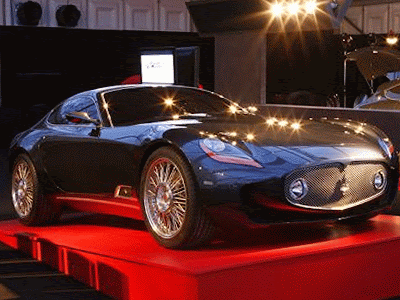In response to the horrific natural disaster that has crippled the nation of Haiti, Naomi Campbell together with Lotus Cars will be auctioning eight special edition "Naomi for Haiti" Lotus Evora sports cars, with the proceeds from the auction going to help the relief effort in Haiti on 12th of January 2010.

2010 Naomi for Haiti Lotus Evora Sports Cars
The Lotus Evora Naomi for Haiti has to be one of the most expensive special edition ever to come out of the company's plant. The firs two Lotus Evora Naomi for Haiti units have been auctioned for more than 300,000 GBP each at The Fashion For Relief Event. The first Lotus Evora Naomi for Haiti was bought by Naomi Campbell’s boyfriend, Vladimir Doronin for no less than 320,000 GBP.

The remaining five Lotus Evora Naomi for Haiti will be auctioned starting from today on the supermodel's website at www.naomiforhaiti.com. The highest bidders and the new owners of the remaining five Lotus Evora Naomi for Haiti cars will be announced at the Lotus press conference on the 2nd of March at the Geneva Motorshow.

The Lotus Evora is a very desirable, multi-award winning, high performance, mid-engined sports car that presents a fantastic piece of design to bid on. The “Naomi for Haiti” Evora sports car has been specially designed by Lotus Design Director Donato Coco and reflects Naomi’s design direction. The bespoke styling combines the flag of Haiti with a dramatic colour scheme and the cars include a full range of options, meaning these cars will all become desirable collectors items.

The “Naomi for Haiti” Evoras will be auctioned at Naomi Campbell's Fashion for Relief TM charity fashion show on the 18th of February at the London Fashion Week venue at Somerset House. The remaining “Naomi for Haiti” Evoras will be entered into an auction run on the “Naomi for Haiti” website Charity Auction - Naomi For Haiti and bidding will commence at 0800 GMT on the 19th of February and will end at 1200 noon GMT on 28th of February 2010.

According to Naomi, Lotus Cars has been Fashion for Relief’s biggest supporter and has been instrumental in helping us to raise crucial funds for The White Ribbon Alliance and its partners in Haiti. Still according to her, to have Lotus on board supporting Fashion for Relief is very important to Sarah Brown, myself and everyone at The White Ribbon Alliance and we are truly very grateful.

Naomi Campbell says, "I am deeply saddened by the recent tragedy in Haiti. So many have been killed and severely affected by the earthquake - women and children in particular are most vulnerable in disasters. Fashion is universal, personal and touches everyone. I am delighted that Lotus Cars is supporting my Fashion for Relief TM charity and I am sure with such generous help we will raise crucial funds to help save the lives of women and children."

Lotus CEO, Dany Bahar said “It was a great pleasure for Lotus to work with Naomi and the White Ribbon Alliance for this excellent cause and we are delighted that by working with Naomi, our suppliers and the generosity of the bidders, we have been able to raise such a significant sum of money to help those in need during this difficult time.”

It was announced on March 11, 2010 at the 80th Geneva Motor Show that the eight special editions of the Lotus Evora Naomi for Haiti have achieved in excess of €1.4m at auction.
You have read this article 2010 /
Lotus /
Sports Car
with the title April 2010. You can bookmark this
page URL https://dannyspanner.blogspot.com/2010/04/2010-naomi-for-haiti-lotus-evora-sports.html. Thanks!
















































.jpg)
.jpg)

.jpg)


